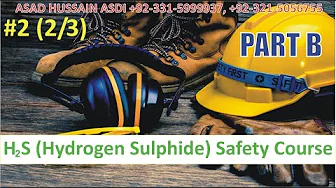GRP/GRE Pipe Manufacturing Techniques Course in Islamabad In Pakistan (Rawalpindi, Peshawar)
GRP/GRE Pipe Manufacturing Techniques Course in Islamabad
This is regularly a challenging and energizing course, highlighting work experience and passed on by enthusiastic master guides all sharp to back you towards victory.
What is GRP/GRE Pipe Manufacturing Techniques?
GRP/GRE Pipe Manufacturing Techniques is a training in which we study about the basic principles for manufacturing pipe techniques. Seamless pipe is made when square steel billets are heated and moulded into cylinder shapes called “rounds”. The round is heated to white-hot in a furnace and rolled under high pressure. As the billet stretches out a hole forms in the centre and a bullet-shaped piercer point is pushed through.
How pipes were manufactured:
-
Seamless or welded steel pipes
-
Blooms and slabs
-
Welded pipe
-
Electric resistance welding (ERW)
-
High frequency induction welding (HFI)
-
Longitudinal submerged arc welding (LSAW)
-
Seamless pipe. ...
-
Oil and gas industry usage
What is the difference between GRE and GRP pipes?
The main difference between the GRE and GRP is the matrix material resin used for bonding the glass fibre. GRP pipes use Isophthalic Resin while GRE pipes use epoxy resin. It is used as a lining material in sewage effluent tanks because of its resistance to chemicals and corrosion.
Career opportunity:
Pipe Manufacturing Techniques is one of the famous group in Oil & Gas, Petrochemical, Refinery, Chemical, Power-Plant, Steel, Water, and Pharmaceutical sectors. They are responsible for the piping systems that carry water, steam, gas, oil, two-phase mixture, waste, or other fluid.
Types of Manufacturing of GRP Pipes:
-
Different types of manufacturing methods are applied for GRP pipes like
-
Filament winding.
-
Centrifuge
-
Continuous winding or Drostholm Method.
-
Helical Filament winding
Course content:
-
Selecting Piping Materials
-
Mechanical and Physical Properties of Metal
-
Physical Composition and Heat-Treating Practices of Steel
-
Pipe Manufacturing Methods
Learning outcomes:
By the end of this course, you will be able to:
-
State the three major criteria for selecting piping materials
-
Discuss the mechanical and physical properties of metal
-
Describe the physical composition and heat-treating practices of steel
-
Describe the various pipe manufacturing methods
Benefits:
-
Durability.
-
Resistance to corrosion.
-
Easily malleable.
-
Recyclable.
-
Cost-efficient.
Benefits of GRP:
Benefits such as high tensile strength, low weight (approximately 1/4 of the weight of steel), corrosion resistant, non-conductive properties, radar transparent and electromagnetically neutral, combine to deliver a highly cost effective, durable and sustainable product.
Benefits of GRE:
-
Wide range of diameters from 1 " (25mm) up to and including 54 " (1400 mm).
-
Standard lengths of 12 m.
-
Adhesive, locked bell/spigot, lamination and flanged jointing systems.
-
Anti-corrosion system.
-
Long life (50 years) + zero maintenance = low life cycle cost.
-
UV Resistant - can be safely installed above-ground.
Career opportunities:
-
Warehouse picker packer
-
Maintenance welder and pipe filter
-
Foreman pipe
-
Shipping foreman
-
Pipe fitter
-
Night foreman
-
Production supervisor
Entry Requirements:
-
Be a hard worker
-
Be fit to perform work authorized by the specific license
-
The learner must have eager to learn about GRP/GRE Pipe Manufacturing Techniques
-
Must be above 18 years
Delivery Mode:
-
Online (Zoom, Skype other Online Sources)
-
Distance Learning
Mode of Exam:
-
Assessment Based
-
Practical Experience
****** For Registration & Information ******
For Free Video Lectures Click Here











